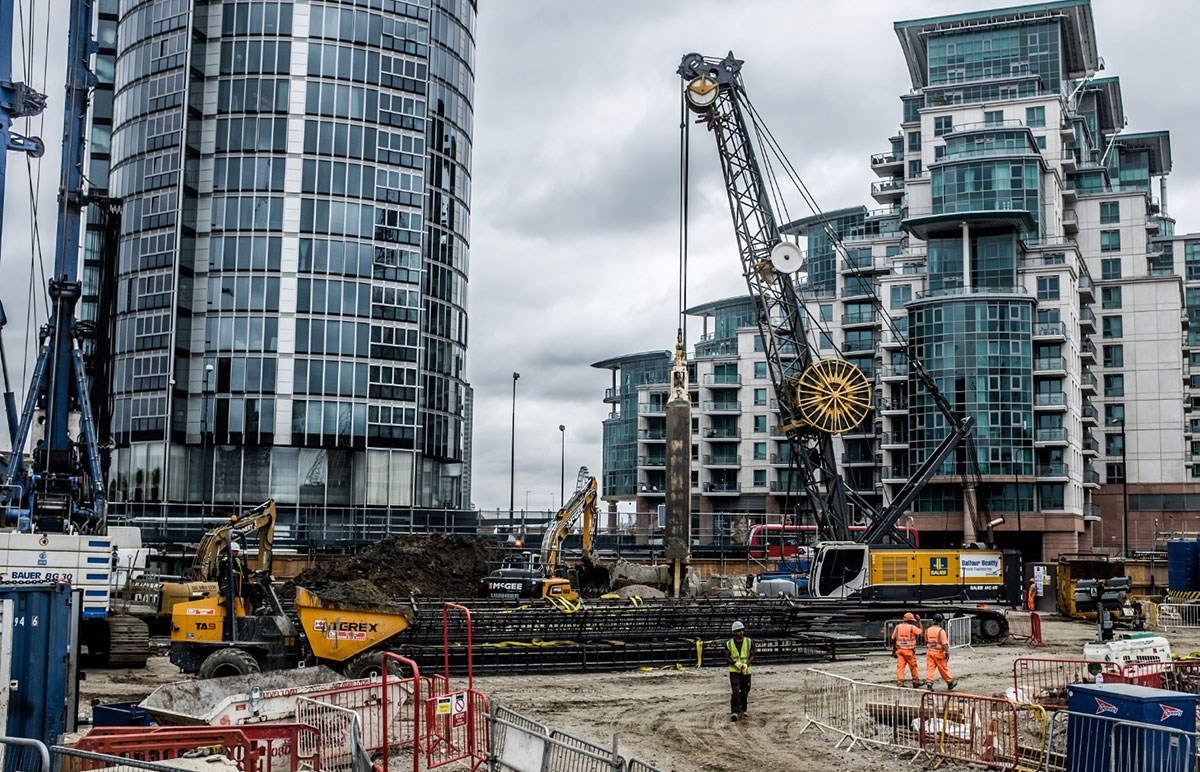The Ultimate Guide To Geotheta
The Ultimate Guide To Geotheta
Blog Article
Excitement About Geotheta
Table of ContentsThe Best Strategy To Use For Geotheta6 Simple Techniques For GeothetaThe Basic Principles Of Geotheta Some Known Questions About Geotheta.
They collaborate with civil designers, architectural designers, architects, and other experts to integrate geotechnical factors to consider into the total job design and building procedure. This requires efficient synergy, control, and communication to ensure that the geotechnical elements straighten with the job purposes and meet governing requirements.Mining & Materials Engineering: Concepts of drilling, infiltration rates, and elements affecting the option of exploration method. Characteristics of nitroglycerins, firing systems and blast patterns. Blasting strategies in surface and underground functions. Unique blasting techniques at excavation borders. Vibration and sound control. Mechanical and constant methods to fragmentation, including longwall shearing and fullface boring.
Integrated evaluation of fragmentation and comminution operations. Supplied by: Mining & Materials Engineering.
What Does Geotheta Mean?
Bachelor's level programs in civil, geotechnical, geological, and environmental engineering usually last four years and consist of general education and learning courses in English, social scientific research, and the humanities, along with training courses in sophisticated mathematics, structural geology, and fluid mineralogy. (https://medium.com/@ianhammond2191/about)
Geotechnical engineering entails the assessment of the dirt and rock conditions at a certain site, and their effects for the advancement of that site. As the majority of frameworks depend on the ground for support, it is without surprise that a detailed understanding of the ground conditions, and the suitability of foundation systems, are essential to the lasting security and performance of the building or structure.
Specialising in the examination of geological developments and ground practices, geotechnical engineers perform scientific examinations and screening to comprehend the influence these geological formations may carry the style and construction of structure, civil and facilities tasks. This knowledge is important for the layout and building of buildings, roads, tunnels, dams, bridges, and water and sewer system.
The geotechnical team at Douglas Partners routinely talk to architects, design designers, developers, and contractors to make suggestions on style and development propositions to make certain that the constructed structures are suitably made for the ground problems. As an example, the style of footing systems needs to think about the weight of the structure, the capability of the ground to support that weight along with movement tolerances and reliable building.
All About Geotheta
This task is significantly simplified by the usage of our Douglas Map geospatial system which makes this details easily available in a simple to make use of internet browser user interface. A geotechnical engineer will certainly direct the boring of boreholes and test pits to accumulate soil and other examples, and also evaluate surface functions and ground direct exposures to form a geotechnical design of the subsurface conditions.
Depending upon the task type and ground conditions experienced, lab screening might among various other things assess strength, compressibility, sensitivity and/or leaks in the structure of soil and rock examples. After this data is collected and collated, the outcomes are utilized for a geotechnical design of the site, which is generally offered as sections across the website.

A geotechnical examination naturally can only evaluate the ground problems at the areas drilled or dug deep into. All-natural variations in soil and rock problems can happen throughout a site and between test locations. It is as a result excellent method that the geotechnical designer be retained throughout construction of the task to provide on-site verification that the ground problems experienced follow the expectations and guidance supplied in the geotechnical examination record.
Some Known Details About Geotheta
Geotechnical engineers use their thorough understanding of dirt and rock to examine risk and fix problems on diverse facilities projectsGeotechnical engineering is a specialist branch of civil engineering which checks out the behavior of planet materials and the application of soil and rock auto mechanics. Consulting Engineer. As a geotechnical designer, you will evaluate the physical, mechanical and chemical residential properties of soil and rock in order to develop structures, preserving structures and this earthworks
Geotechnical design is very closely linked to and overlaps with, both design geology and ground design - https://www.dreamstime.com/ianhammond2191_info. It's possible to specialise in geotechnics or benefit a geotechnical company but be recognized as an engineering rock hound or a ground engineer. As a geotechnical engineer, you'll need to: develop and preserve connections with clients and various other experts associated with the site, throughout each projectmaintain safety requirements on website be conscious of price effects when you make recommendationsstudy geological maps and airborne photographs from a variety of resources and from various time periodsexamine building intends to see exactly how feasible they are based upon your understanding of the siteinvestigate threats or geological risks for the sitesearch for ecologically sensitive attributes, such as land fill begin to establish accurate and interpretive ground modelsplan area investigationsdrill and analyse samples of bedrock, dirt, groundwater and extra materials manage other professionals on sitesolve technical problems as they emerge, such as unforeseen frameworks at drill sitesmonitor conditions throughout and after construction to make certain frameworks are secure in the short and lengthy termadding data gathered on website to your preliminary researchcreating geotechnical calculations, illustrations, and two or three-dimensional computer versions interpreting the datamaking referrals concerning the recommended usage of the site

Report this page